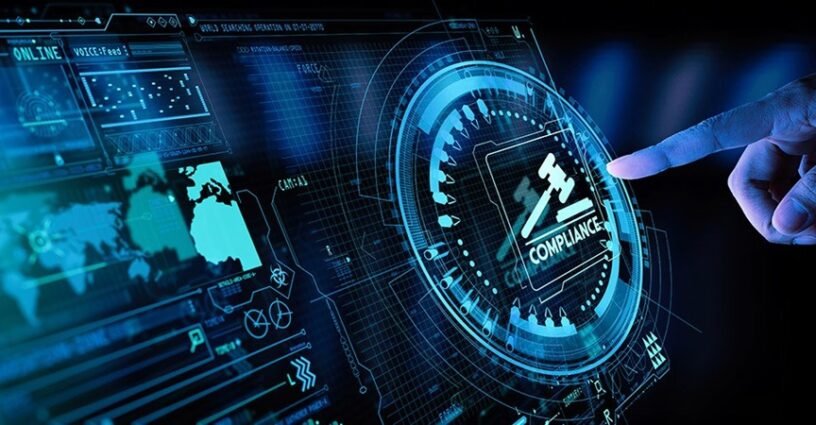Imagine this: you settle in for a movie night, popcorn in hand, only to discover Netflix is down. Annoying, right? Now picture a similar scenario, but instead of Netflix, it’s the power grid. Hospitals plunged into darkness, traffic lights malfunctioning – a cyberattack crippling a critical part of our infrastructure.
This isn’t some dystopian future; it’s a very real threat. The interconnectedness of our world makes cybersecurity more crucial than ever. So, how do we fortify our digital defenses? Let’s delve into strengthening cybersecurity infrastructure.
Why is it Important?
Think of your house. You have a sturdy lock on the door, maybe an alarm system. It’s similar with cybersecurity. Our critical infrastructure – power grids, financial systems, communication networks – are like those houses. An intrusion can have devastating consequences.
Remember the 2021 Colonial Pipeline hack? A ransomware attack shut down a major pipeline, causing gas shortages and price hikes on the East Coast. This is just one example of how a cyberattack can ripple through our daily lives.
Building a Stronger Wall
Shoring up our cybersecurity infrastructure requires a multi-pronged approach. Here are some key areas:
- Defense in Depth: Imagine an onion – multiple layers protecting the core. This layered approach applies to cybersecurity. Firewalls filter incoming traffic, software is kept up-to-date with security patches, and employee training helps identify phishing attempts.
- Threat Intelligence: Staying a step ahead of cybercriminals is vital. Sharing information about known threats and vulnerabilities between organizations allows for quicker detection and response.
- Workforce Development: Cybersecurity is a complex field, and we need a skilled workforce to combat ever-evolving threats. Encouraging education and training programs is essential.
- Collaboration: No one’s an island in cybersecurity. Governments, businesses, and individuals all have a role to play. Public-private partnerships and information sharing are crucial for a collective defense.
What Can You Do?
While cyberattacks may seem like a large-scale issue, there are steps we can all take to strengthen our own digital defenses:
- Use strong passwords and update them regularly.
- Be cautious about clicking on links or opening attachments in emails, especially from unknown senders.
- Keep your software up to date, including your operating system and security applications.
- Be mindful of what information you share online, especially on social media.
By working together and prioritizing cybersecurity, we can build a more resilient digital infrastructure, safeguarding our critical systems and the smooth functioning of our society. Remember, everyone has a role to play in keeping our online world secure. After all, a strong defense is the best offense, even in the digital realm.
Here are few frequently asked questions on Cybersecurity:
What are three things we can do to strengthen cybersecurity?
- Implement Strong Access Controls: Ensuring that only authorized users have access to systems and data is fundamental. This includes using multi-factor authentication (MFA), strong password policies, and role-based access control (RBAC) to limit access based on user roles and responsibilities.
- Regularly Update and Patch Systems: Keeping software, hardware, and firmware up to date is crucial. Regularly applying patches and updates helps protect against known vulnerabilities that attackers could exploit.
- Employee Training and Awareness: Human error is a significant factor in many cybersecurity breaches. Regular training programs can help employees recognize phishing attempts, understand best practices for data protection, and stay aware of the latest cyber threats.
How to improve critical infrastructure cybersecurity?
- Adopt a Risk Management Framework: Implementing a comprehensive risk management framework, such as the NIST Cybersecurity Framework, helps organizations identify, assess, and manage cybersecurity risks in a structured manner. This includes establishing a clear understanding of potential threats and vulnerabilities and developing strategies to mitigate them.
- Enhance Information Sharing and Collaboration: Collaboration between public and private sectors, including information sharing about threats, vulnerabilities, and incidents, is essential. Initiatives like the Information Sharing and Analysis Centers (ISACs) facilitate this by providing critical infrastructure sectors with timely and relevant cyber threat information.
- Invest in Advanced Technologies: Utilizing advanced cybersecurity technologies, such as intrusion detection systems (IDS), intrusion prevention systems (IPS), and security information and event management (SIEM) solutions, helps monitor, detect, and respond to cyber threats in real-time. Additionally, employing artificial intelligence (AI) and machine learning (ML) can enhance threat detection and response capabilities.
What is the role of cybersecurity in protecting critical infrastructure?
Cybersecurity plays a vital role in protecting critical infrastructure by safeguarding the systems and networks essential for the functioning of society. This includes:
- Preventing Disruptions: Cybersecurity measures help prevent unauthorized access and cyberattacks that could disrupt essential services like electricity, water supply, healthcare, and transportation. Ensuring the continuity and reliability of these services is paramount for public safety and economic stability.
- Protecting Sensitive Information: Critical infrastructure often involves handling sensitive data, such as personal information, financial records, and proprietary business information. Effective cybersecurity protects this data from breaches, theft, and misuse.
- Maintaining Public Trust: Strong cybersecurity practices help maintain public trust in essential services. By demonstrating a commitment to protecting infrastructure from cyber threats, organizations can assure the public and stakeholders that they are taking necessary steps to ensure safety and reliability.




23 Pingbacks